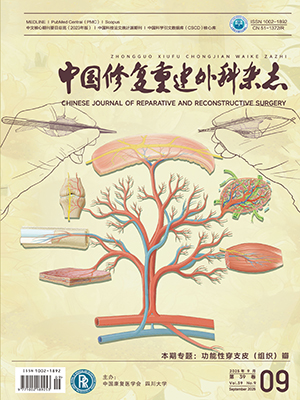A total of 15 amputated adult upper limbs were used for this experiment by arterial infusion of Chengdu ink in 10% formalin, followed by dissection of the specimens, and then undergoing the process of making the specimens transparent. The speciments were immersed in winter-green oil, and the vascular architecture at the different levels of the flexor tendon of fingers were observed under surgical microscope. It was noted that the vascular supply of the flexor tendons of the fingers had a regular pattern: a richer blood vessels inside te tendon sheath were distributed eccentrically over the tendon; the blood vessels in the interior of the tendon located in the connecive tessues in between the tendon fascicules; the longitudinal blood vessels in the interior of the tendon did not run through the entire length of the tendon, but rather segmentally.
Citation: Yang Zhiming,et al.. EXPERIMENTAL STUDY OF TENDON REPAIR BY MICROSURGERY1. VASCULAR ARCHITECTURE AND PATTERNS OF BLOOD SUPPLY OF ADULT HUMAN FLEXOR TENDON OF FINGER. Chinese Journal of Reparative and Reconstructive Surgery, 1992, 6(2): 109-110. doi: Copy
Copyright © the editorial department of Chinese Journal of Reparative and Reconstructive Surgery of West China Medical Publisher. All rights reserved




